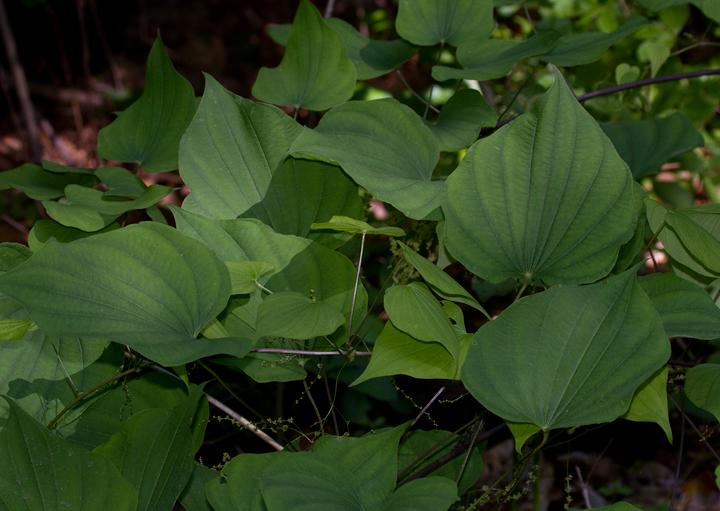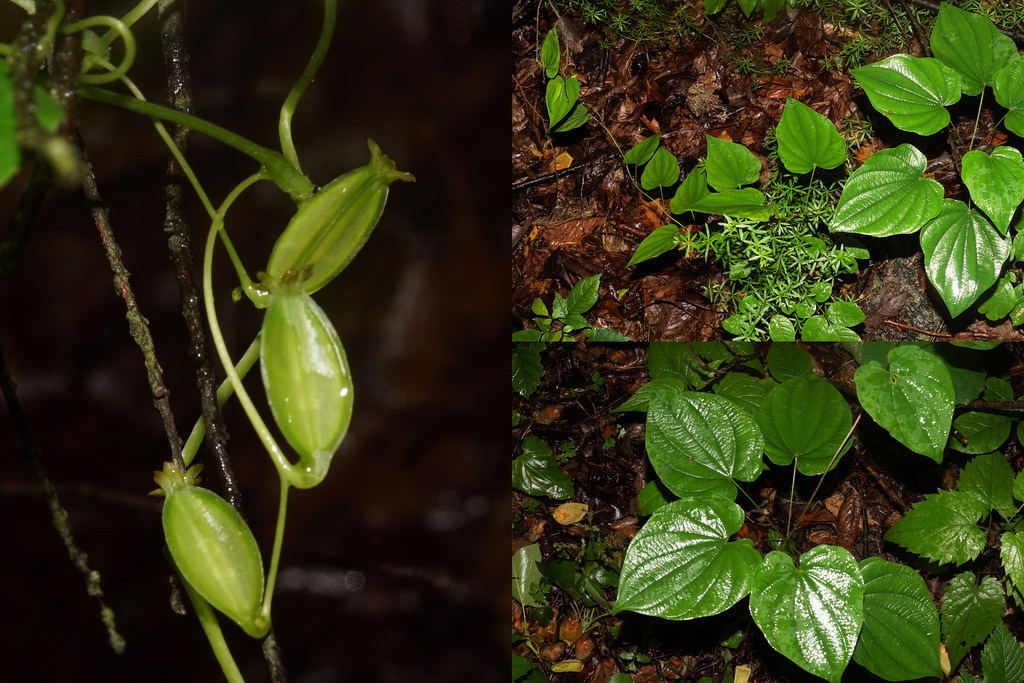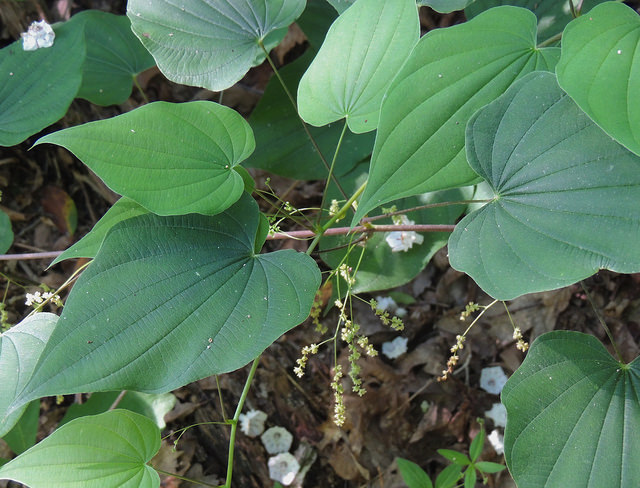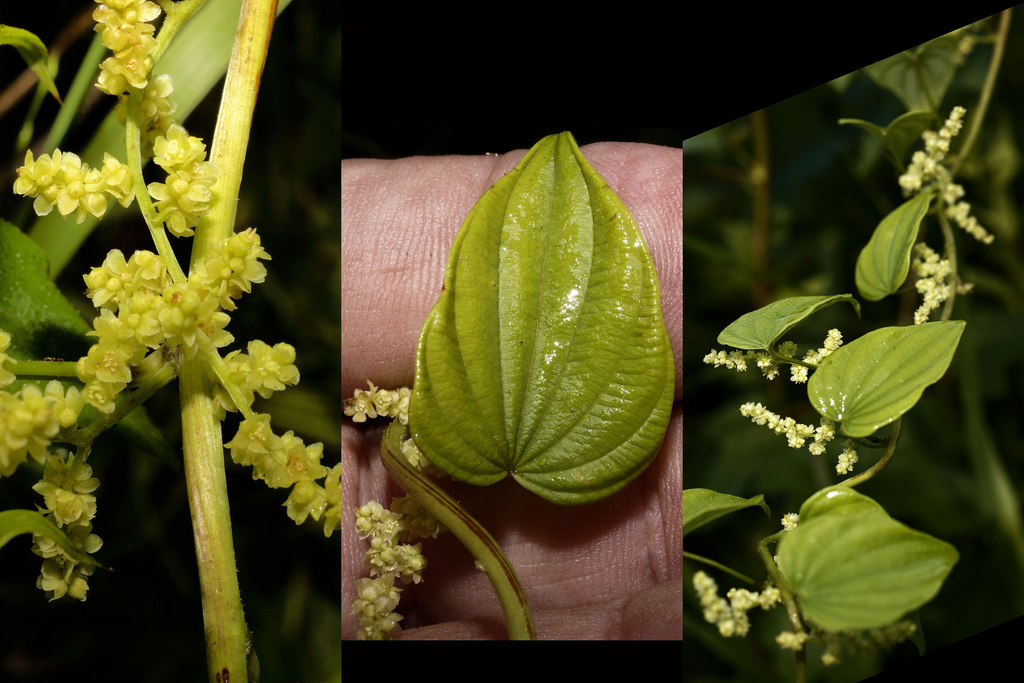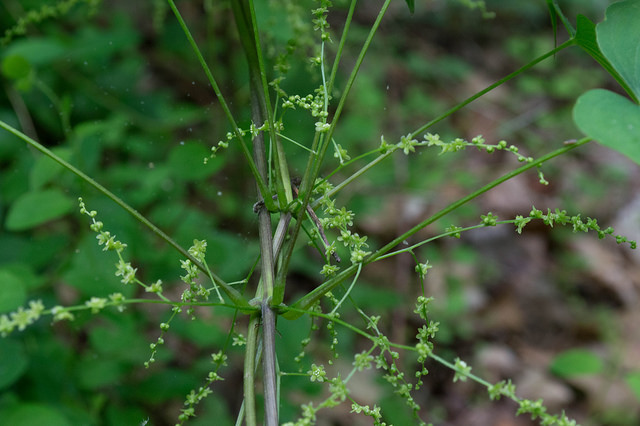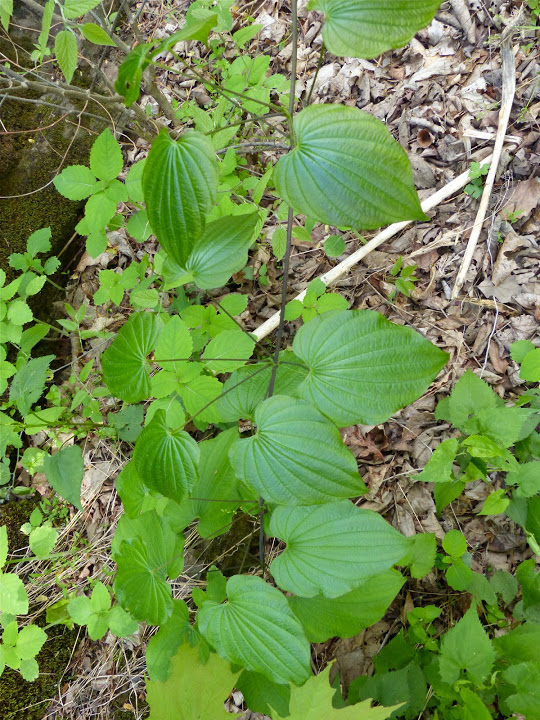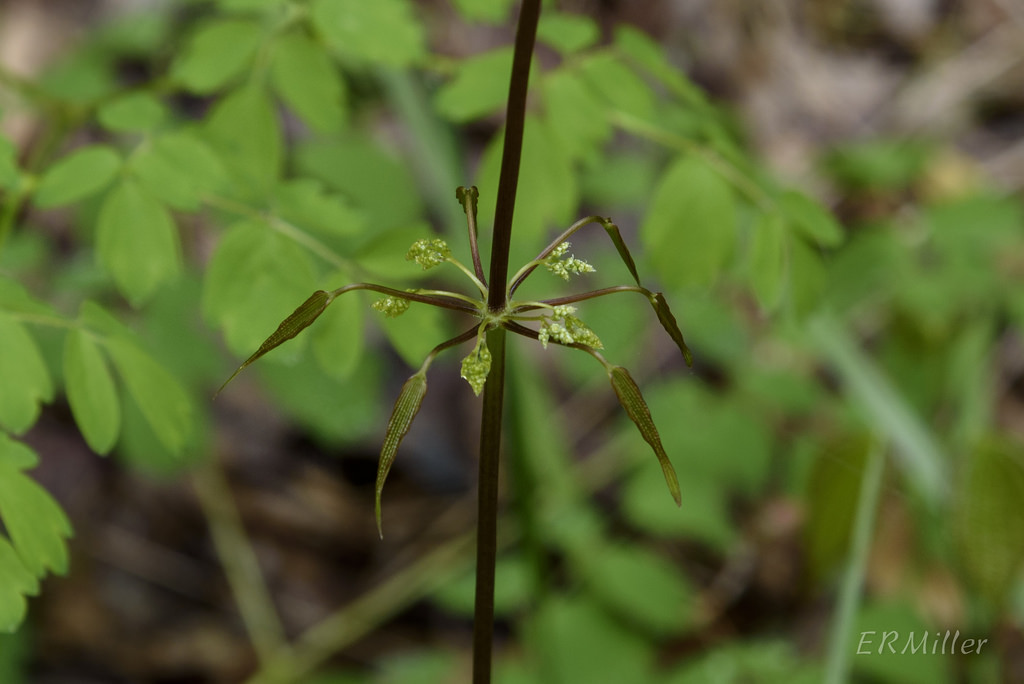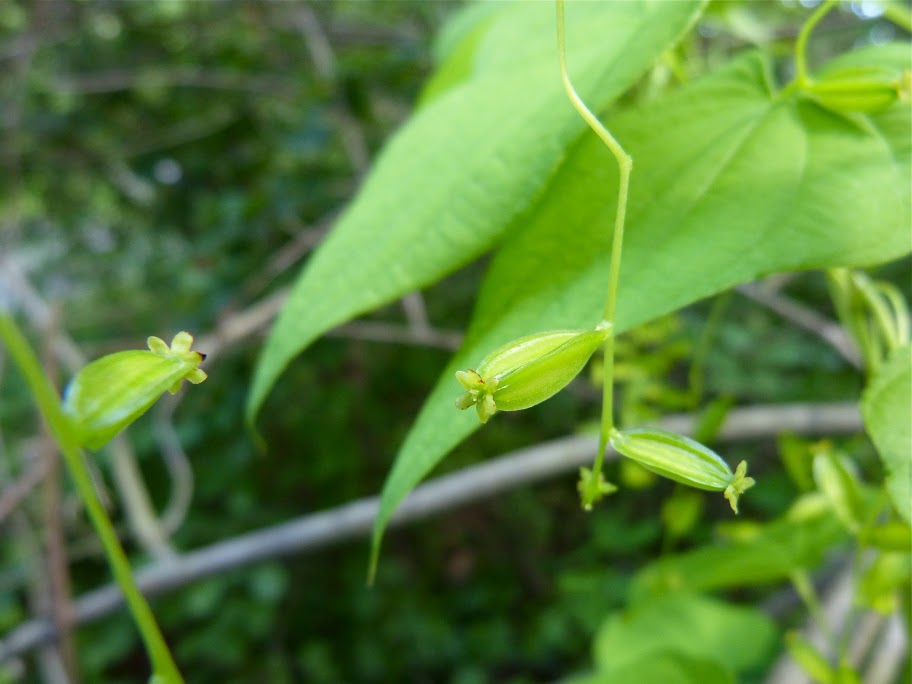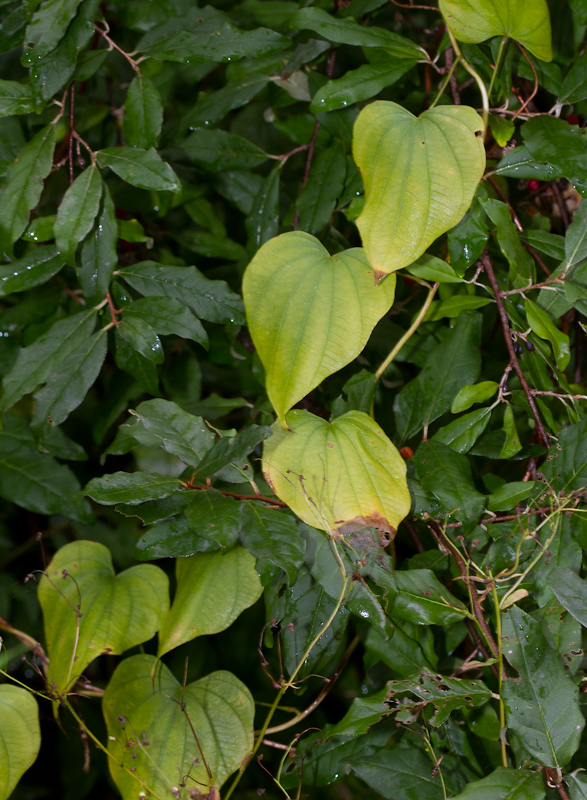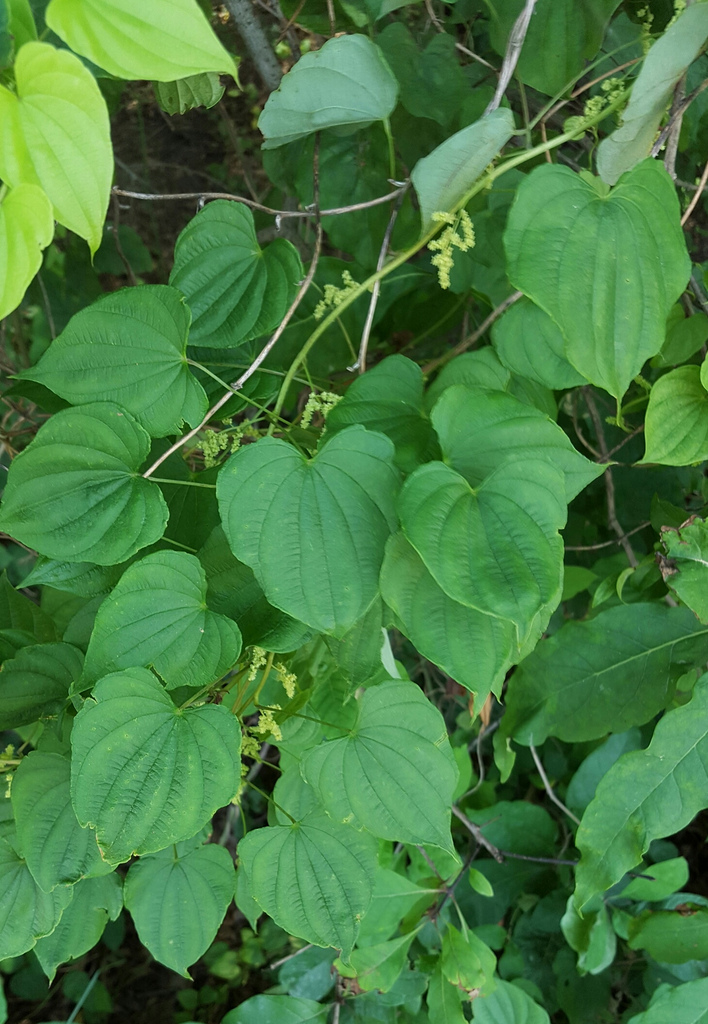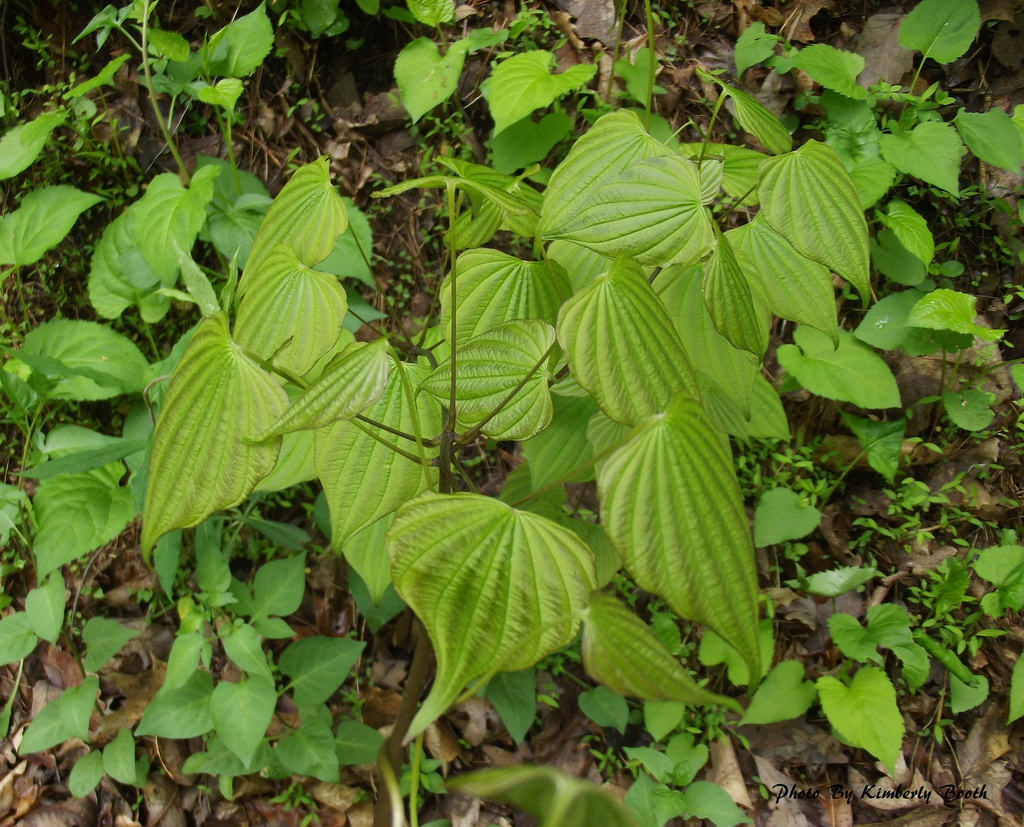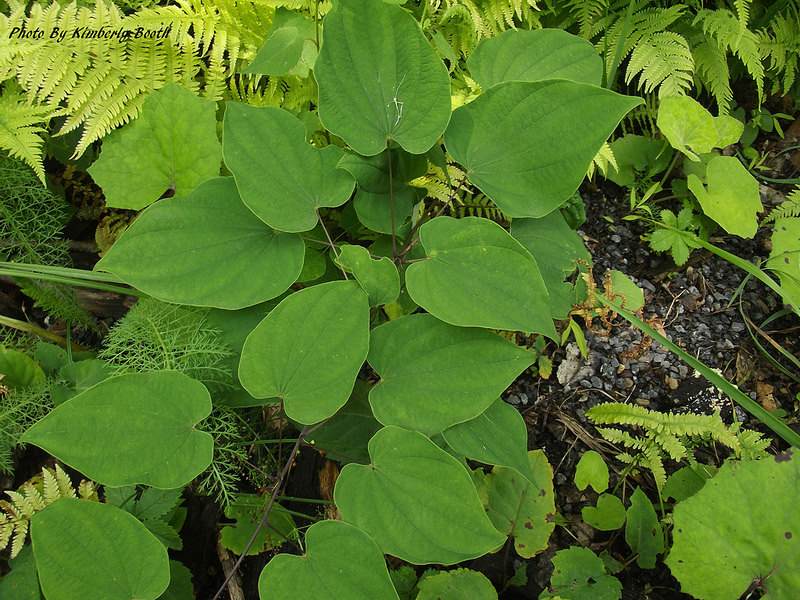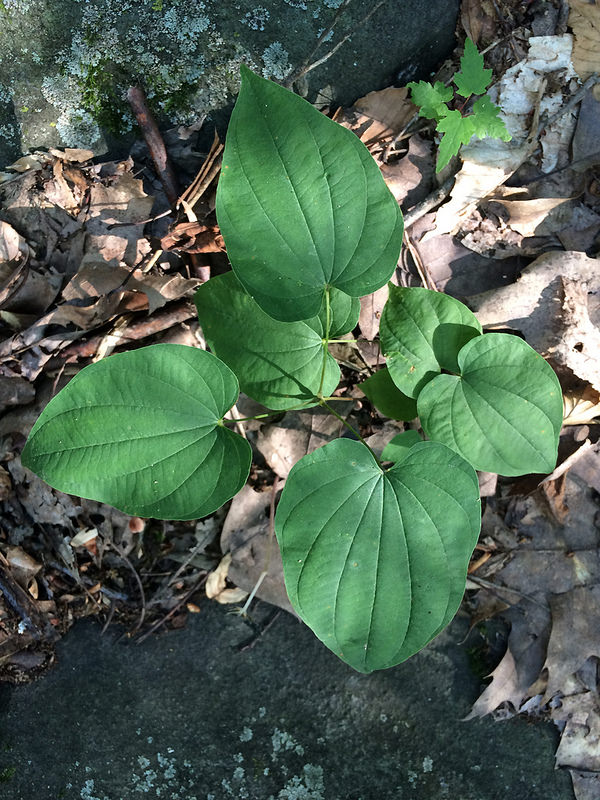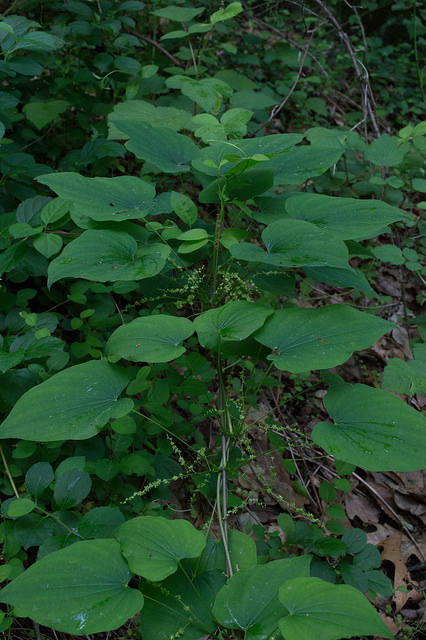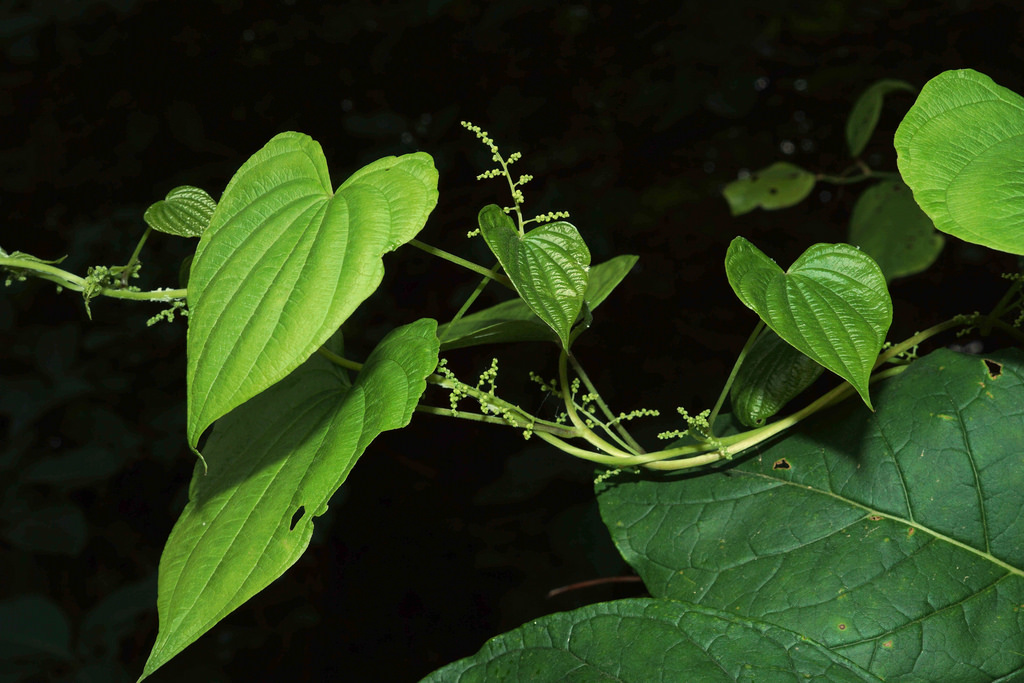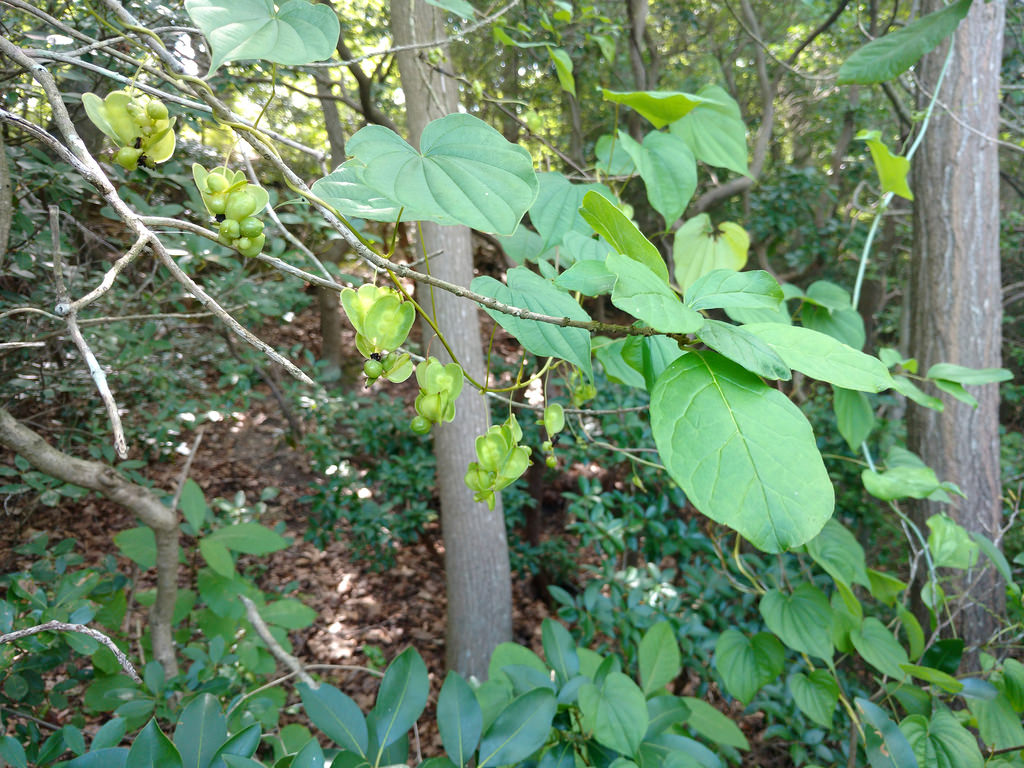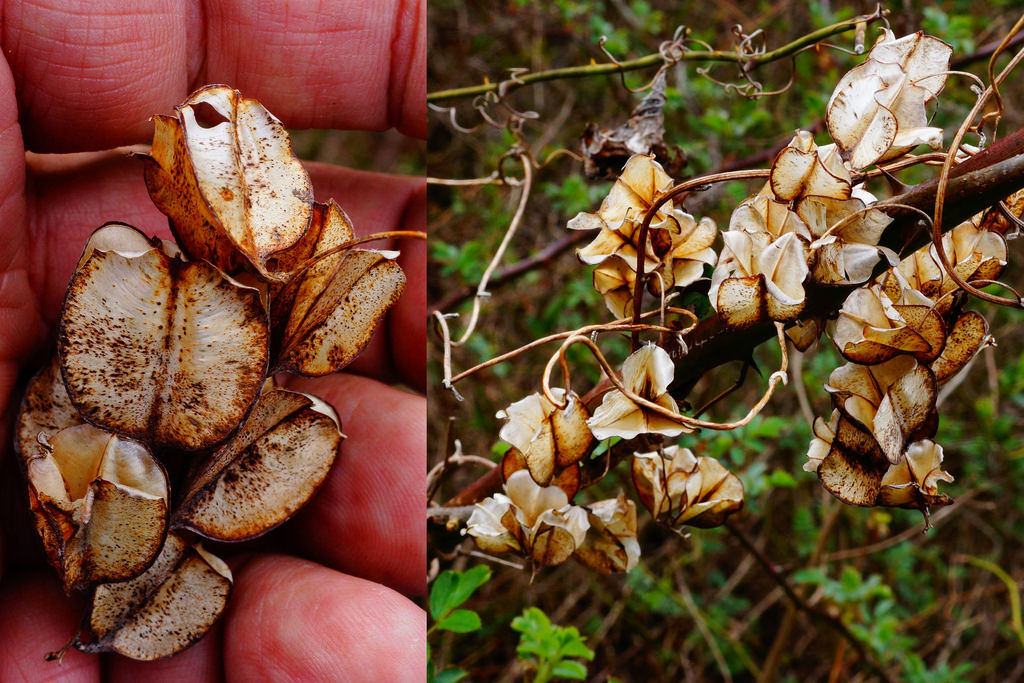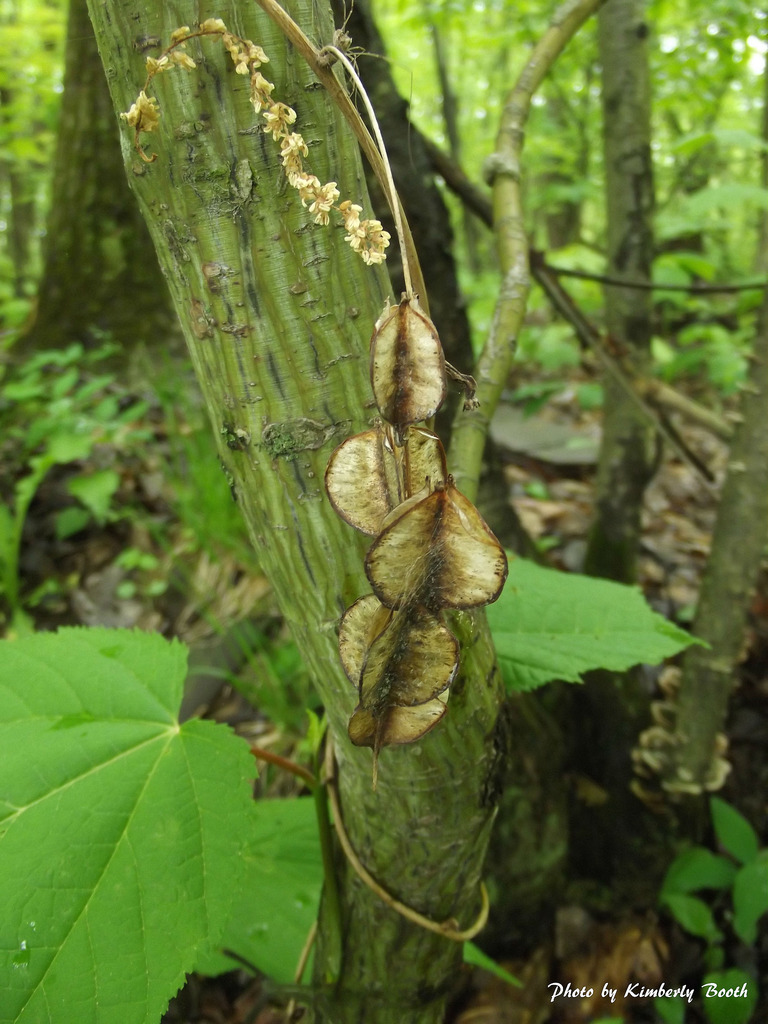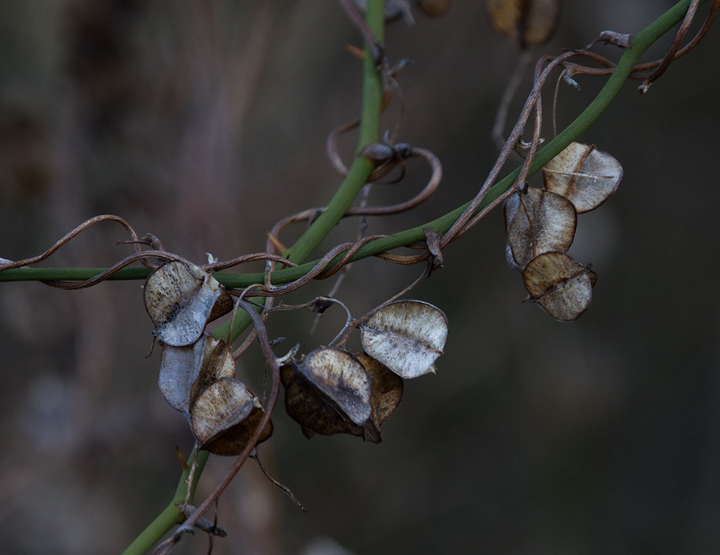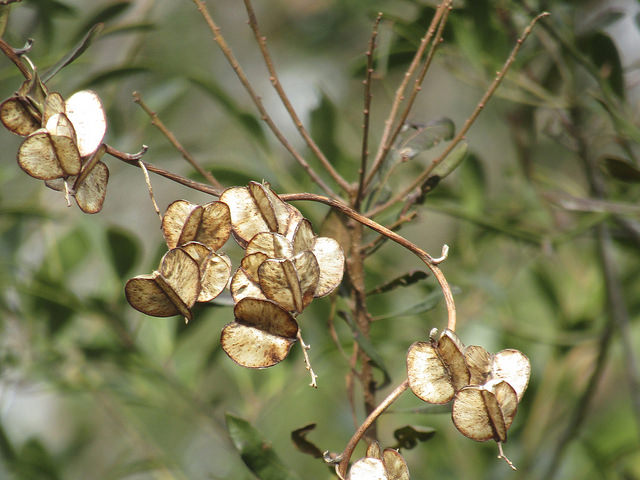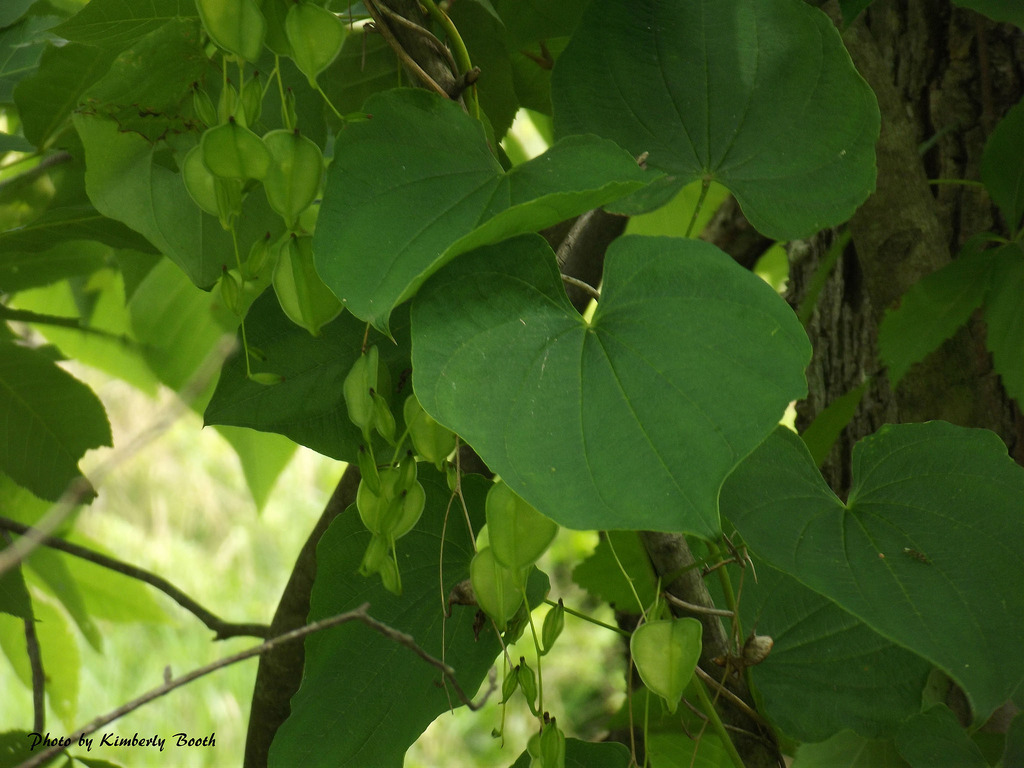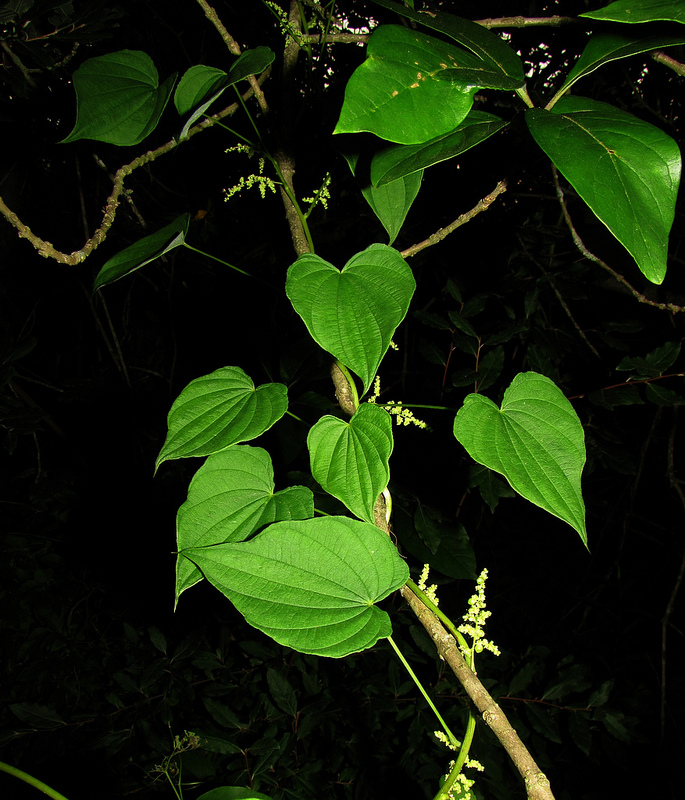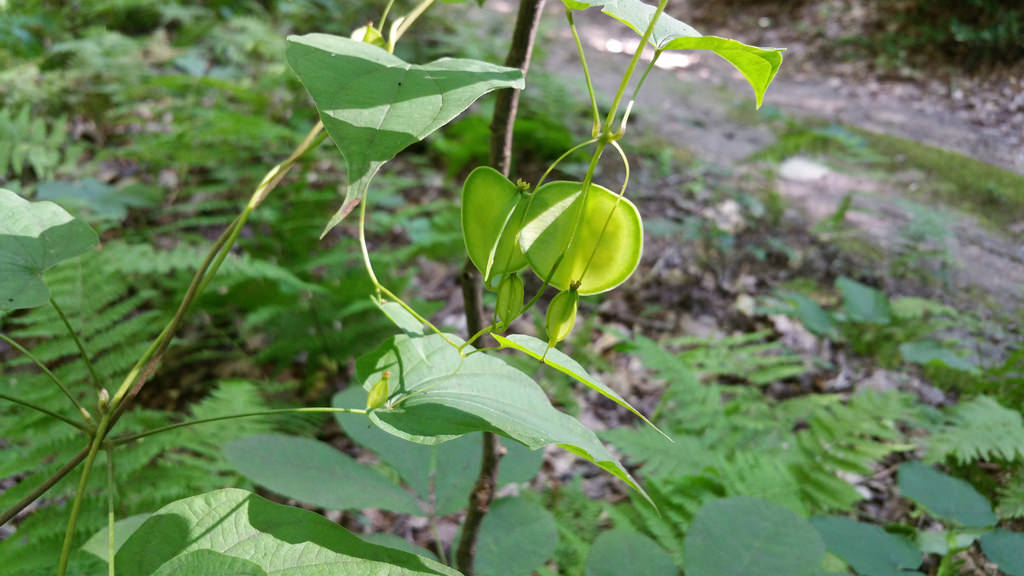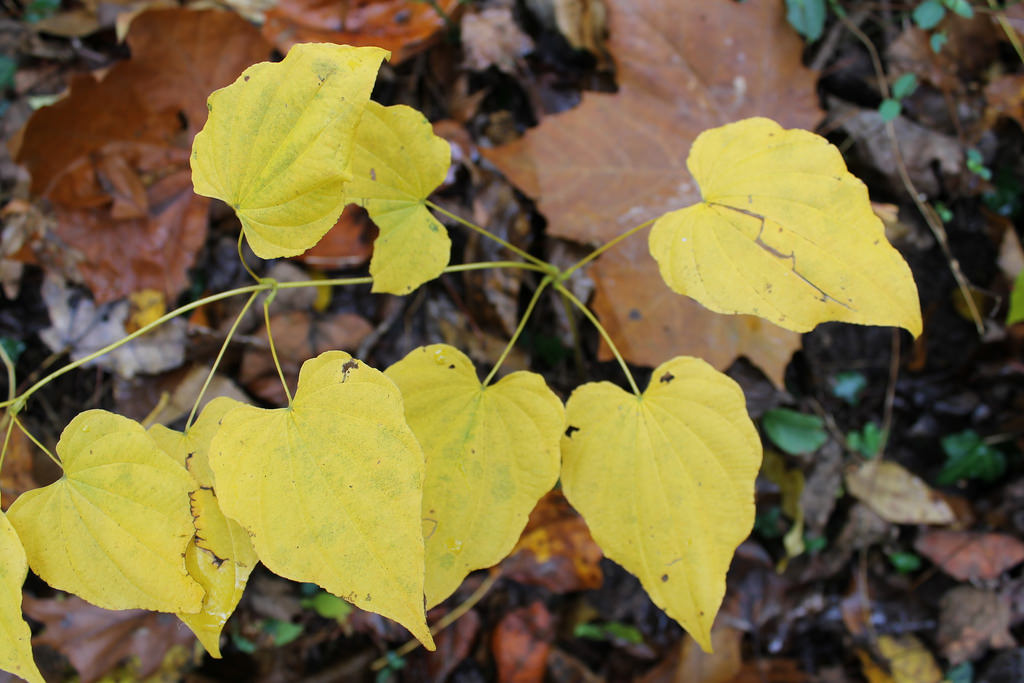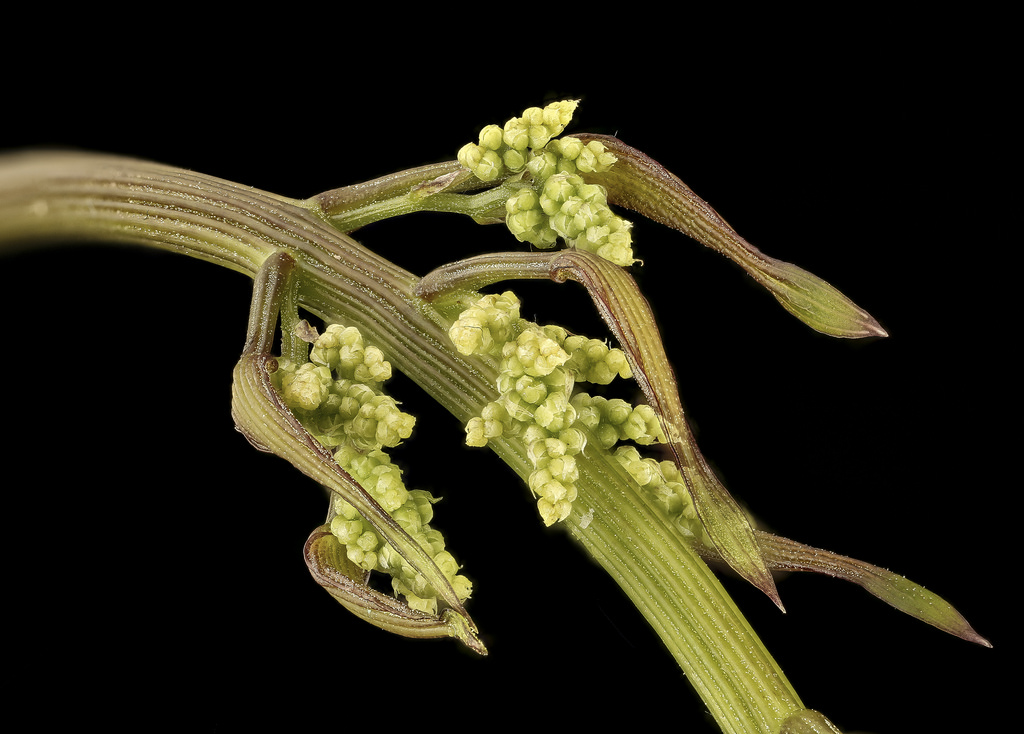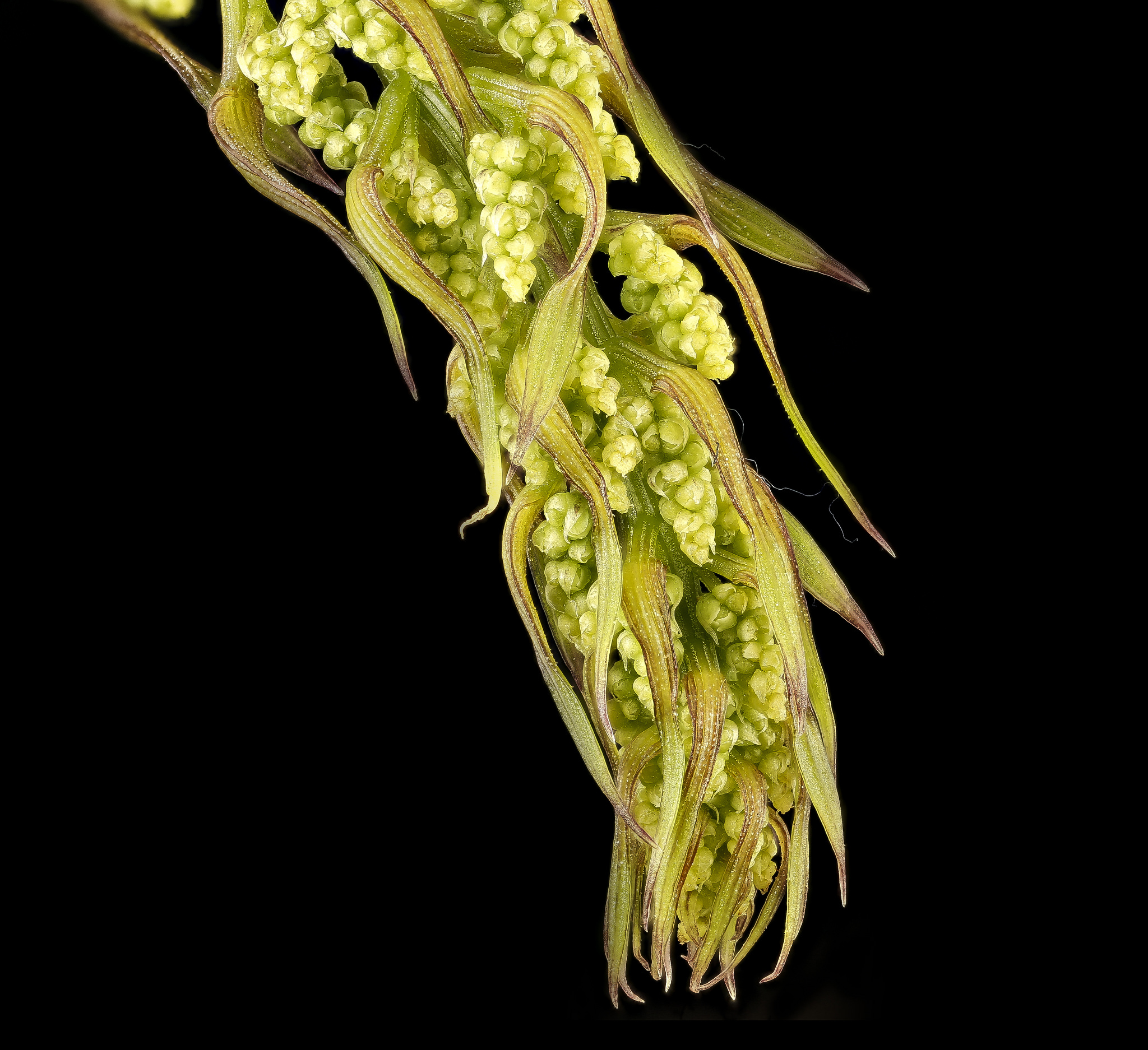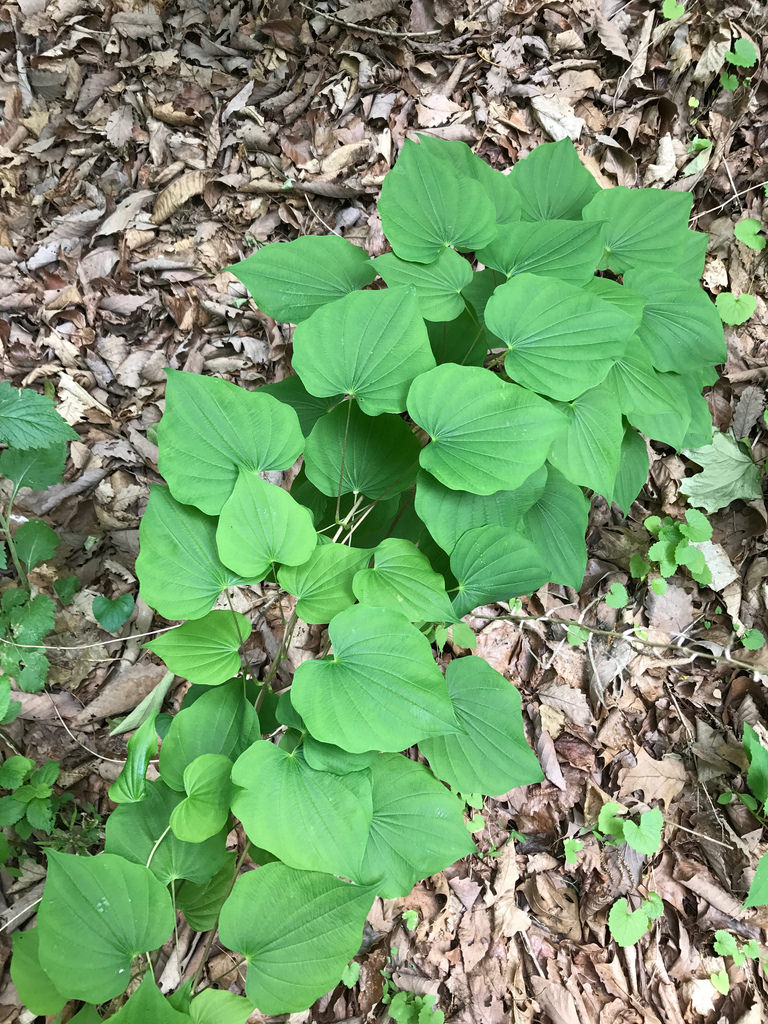Map Snapshot
























579 Records
Seasonality Snapshot
Source: Wikipedia
| Dioscorea villosa | |
|---|---|
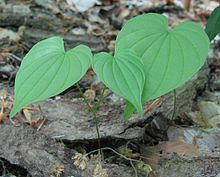
| |
| Scientific classification | |
| Kingdom: | Plantae |
| Clade: | Tracheophytes |
| Clade: | Angiosperms |
| Clade: | Monocots |
| Order: | Dioscoreales |
| Family: | Dioscoreaceae |
| Genus: | Dioscorea |
| Species: | D. villosa
|
| Binomial name | |
| Dioscorea villosa | |
| Synonyms[3] | |
| |
Dioscorea villosa is a species of twining tuberous vine which is native to eastern North America. It is commonly known as wild yam, colic root, rheumatism root, devil's bones, and fourleaf yam.[4] It is common and widespread in a range stretching from Texas and Florida north to Minnesota, Ontario and Massachusetts.[3][5][6][7][8]
Description
[edit]
Dioscorea villosa flower petal color is commonly known to be green to brown, or white. Lengths of the flower petals range from 0.5 to 2 mm (1⁄32 to 3⁄32 in). The flowers tend to grow out of the axil; this is the point at which a branch or leaf attaches to the main stem. There is only one flower present on the inflorescence.[verification needed] The fruit of the plant is a capsule that splits and releases the seeds within to then begin the dispersal process[9] The fruit of Dioscorea villosa ranges in size from 10–30 mm (3⁄8–1+3⁄16 in).[10] The flower does not produce aerial bulblets. THe leaves are heart-shaped, usually a whorl of four at each node, but there can be as many as nine in a whorl.[11]
Taxonomy
[edit]Synonyms of Dioscorea villosa include Dioscorea hirticaulis and Dioscorea villosa var. hirticaulis. Common names of Dioscorea villosa include wild yam, Atlantic yam, common wild yam, wild yam-root, yellow yam, colic root, and rheumatism root.[2][12][13]
Chemistry
[edit]Dioscorea villosa contains diosgenin, which despite claims is not a phytoestrogen and does not interact with estrogen receptors.[14] Other steroidal saponins are also found in the plant.[citation needed]
Medical use
[edit]Some of the English common names of this plant reflect its use in Native American and other traditional medicines.[15] Native Americans in the southeast cultivated this plant.[16] In traditional Russian herbal medicine, saponin extracts from the roots of various varieties of wild yam are thought to be an anticoagulant, antisclerotic, antispasmodic, cholagogue, depurative, diaphoretic, diuretic and a vasodilator.[17]
There is little modern clinical research on Dioscorea villosa, and the one study of a wild yam-containing cream for menopausal symptoms failed to find any value from this therapy.[18] According to the American Cancer Society, there is no evidence to support wild yam or diosgenin being either safe or effective in humans.[19]


References
[edit]- ^ Kirchner, W.; Mikanik, A.; Filyaw, T.; Preston, J.; Reinier, J. E.; Gerrity, J. (2024). "Dioscorea villosa". IUCN Red List of Threatened Species. 2024: e.T116995990A137632972. Retrieved 20 October 2024.
- ^ a b "Dioscorea villosa | NatureServe Explorer". NatureServe Explorer. Retrieved 20 October 2024.
- ^ a b Kew World Checklist of Selected Plant Families
- ^ Gotfredsen, Erik (16 Dec 2018). "Liber Herbarum II". Retrieved 27 Dec 2018.
- ^ Flora of North America
- ^ Govaerts, R., Wilkin, P. & Saunders, R.M.K. (2007). World Checklist of Dioscoreales. Yams and their allies: 1-65. The Board of Trustees of the Royal Botanic Gardens, Kew.
- ^ Biota of North America Program, 2013 county distribution map
- ^ "United Plant Savers". 1 July 2018. Archived from the original on 1 April 2019. Retrieved 27 Dec 2018.
- ^ "Dioscorea villosa (wild yam): Go Botany". gobotany.nativeplanttrust.org. Retrieved 2021-11-11.
- ^ "Dioscorea villosa (Colic root, Wild Yam, Yam-root) | North Carolina Extension Gardener Plant Toolbox". plants.ces.ncsu.edu. Retrieved 2021-11-11.
- ^ al Shebaz, Isan A.; Schubert, Bernice G. (January 1989). "The Dioscoreaceae of the Southeastern United States". Journal of the Arnold Arboretum. 70 (1): 70.
- ^ "Lady Bird Johnson Wildflower Center - The University of Texas at Austin". www.wildflower.org. Retrieved 2021-11-11.
- ^ "Wild Yam (Dioscorea villosa)". www.illinoiswildflowers.info. Retrieved 2021-11-11.
- ^ Medigović I, Ristić N, Živanović J, Šošić-Jurjević B, Filipović B, Milošević V, Nestorović N (2014). "Diosgenin does not express estrogenic activity: A uterotrophic assay". Can J Physiol Pharmacol. 92 (4): 292–8. doi:10.1139/cjpp-2013-0419. PMID 24708211.
- ^ Austin, DF (2004). Florida Ethnobotany. Boca Raton: CRC Press. p. 267. ISBN 9780849323324.
- ^ Swanton, John Reed (1979). The Indians of the southeastern United States. Internet Archive. Washington : Smithsonian Institution Press. ISBN 978-0-87474-895-6.
- ^ Zevin, Igor Vilevich. A Russian Herbal. 1997. Rochester, Vermont: Healing Arts Press. p.146-47.
- ^ Geller SE, Studee L (2005). "Botanical and dietary supplements for menopausal symptoms: What works, what doesn't". J Womens Health (Larchmt). 14 (7): 634–49. doi:10.1089/jwh.2005.14.634. PMC 1764641. PMID 16181020..
- ^ "Wild Yam". American Cancer Society. November 2008. Archived from the original on 2 May 2015. Retrieved 21 September 2013.
Further reading
[edit]- http://www.nlm.nih.gov/medlineplus/druginfo/natural/970.html
- Eagon PK, Elm MS, Hunter DS, et al. Medicinal herbs: modulation of estrogen action. Era of Hope Mtg, Dept Defense; Breast Cancer Res Prog, Atlanta, GA 2000;Jun 8-11.
